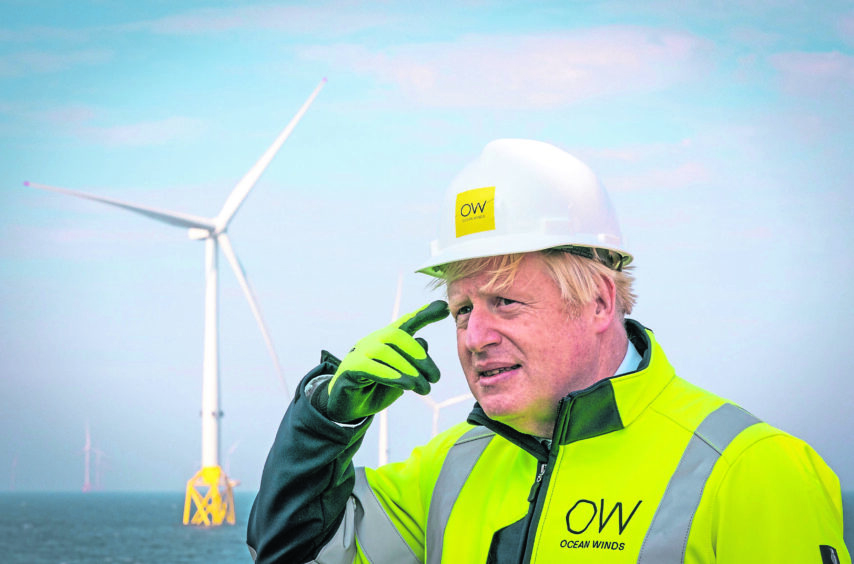
Boris Johnson is demanding the offshore wind industry slashes the time it takes to build a wind farm in the UK.
And it appears to be a point of particular irritation for the Prime Minister, having caused him to the bang the table “in frustration” during a recent meeting.
Sarah Redwood, director of renewable energy deployment at the Department for Business, Energy and Industrial (BEIS) says Mr Johnson has been forthright in his want for the sector to bring down its timelines.
During a session at the Global Offshore Wind conference in Manchester, she said: “In order to be able to achieve that (offshore wind targets), we’re all going to need to work together.
“Government can’t do it on our own, industry can’t do it on its own, and we can’t do it project by project. We’re going to have to collaborate.
“A critical thing is speeding up the amount of time it takes to build a wind farm. I’ve sat across the table from the Prime Minister twice now, and he’s literally banged the table in frustration at how long it takes.
“He wants us to do everything we can to make it much faster.”
Cutting the average time it takes to build an offshore wind farm was a point that cropped up numerous times during the conference.
International events mean there is a sharp focus on the UK becoming energy self-sufficient as soon as possible, with offshore wind a key facet in achieving that.
Meanwhile there is the ongoing need to decarbonise global energy systems to help stem the impacts of climate change.
There is currently a multi-year gap between developers being awarded acreage and turbines generating green energy.
For its part, this is something the industry is acutely aware of, and is working hard to address.
And the pressure is on, with UK Government recently challenging the offshore wind to go further as part of its energy security strategy.
Ms Redwood said: “The world really changed at the start of the year with the invasion of Ukraine and there is a focus around how we tackle the energy situation and end imports of oil and gas.
“That led to the publication of the energy security strategy in April, which included an increased ambition for offshore wind of 50 gigawatts (GW) by 2030, including 5GW of floating offshore wind.
“That is a huge challenge, but it’s also very inspirational.”
Recommended for you


 © Supplied by RenewableUK
© Supplied by RenewableUK